Disclosure: This article contains affiliate links. We may earn a commission from purchases at no extra cost to you, which helps our travel content.
There's something magnetic about places where water and history intertwine. As someone who's spent years exploring New Zealand's coastlines and caves, I've developed a particular fondness for maritime heritage sites. When a recent trip back to the States coincided with a friend's wedding in Virginia Beach, I couldn't pass up the chance to explore Chesapeake's historic waterways—a region where America's naval and colonial history runs as deep as the channels that have shaped this nation since its earliest days.
Navigating Chesapeake's Naval Legacy
Chesapeake sits at the heart of Hampton Roads, one of America's most significant maritime crossroads and home to the world's largest naval base. My journey began at the Naval History & Heritage Command, where centuries of American sea power come alive through meticulously preserved artifacts and vessels.
The highlight was undoubtedly the guided tour of the USS Wisconsin at Nauticus, a massive Iowa-class battleship that served in World War II, Korea, and the Gulf War. Walking her decks, I was struck by both the engineering marvel and the human stories—sailors who lived in these tight quarters for months at a time. The docent, a retired Navy officer named Frank, shared tales that no placard could capture, from mess hall pranks to tense moments during combat operations.
For history buffs (or anyone fascinated by massive machines of war), I'd recommend bringing a good pair of polarized sunglasses to cut the glare off the water and metal surfaces—they made a world of difference for photographing the ship's exterior against the harbor backdrop.
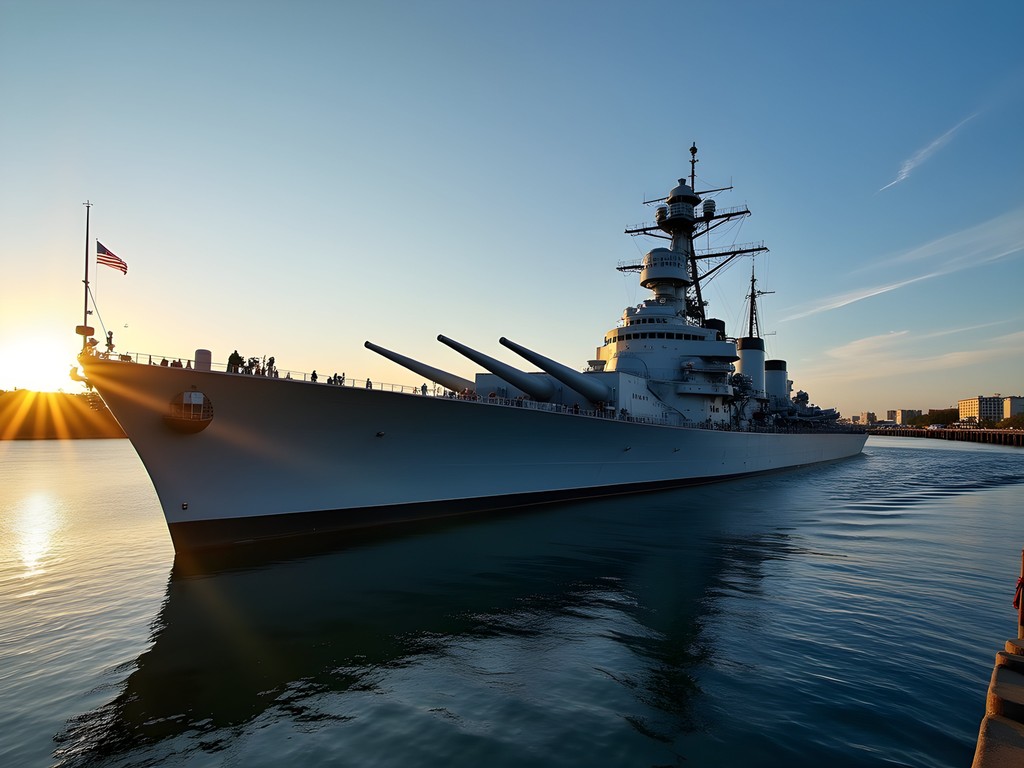
💡 Pro Tips
- Visit early in the morning to avoid crowds and catch the magical light on the water
- The guided tours are worth the extra cost—the personal stories from veteran docents add tremendous value
- Wear comfortable shoes with good grip—ship decks and docks can be slippery
Great Bridge Lock Park: Where History Flows
The Intracoastal Waterway has been America's liquid highway for centuries, and nowhere is this more evident than at Great Bridge Lock Park. This engineering marvel connects the Elizabeth River to the Albemarle and Chesapeake Canal, creating a vital navigation link that bypasses the often-treacherous waters of the Atlantic.
I spent a fascinating afternoon watching boats rise and fall as the lock operators—modern-day keepers of maritime tradition—managed water levels with practiced precision. What struck me most was how this 19th-century technology continues to function essentially unchanged, a testament to the ingenuity of early American engineers.
The park itself offers excellent vantage points for photographers, with interpretive signs explaining the historical significance of the Battle of Great Bridge—a Revolutionary War engagement that forced the British to abandon Norfolk. I found myself imagining colonial vessels navigating these same waters, carrying the commerce that would help build a nation.
If you're planning to spend time exploring the lock and surrounding trails, I'd recommend bringing a insulated water bottle to stay hydrated—the Virginia spring sun can be deceptively warm, even when there's a pleasant breeze coming off the water.
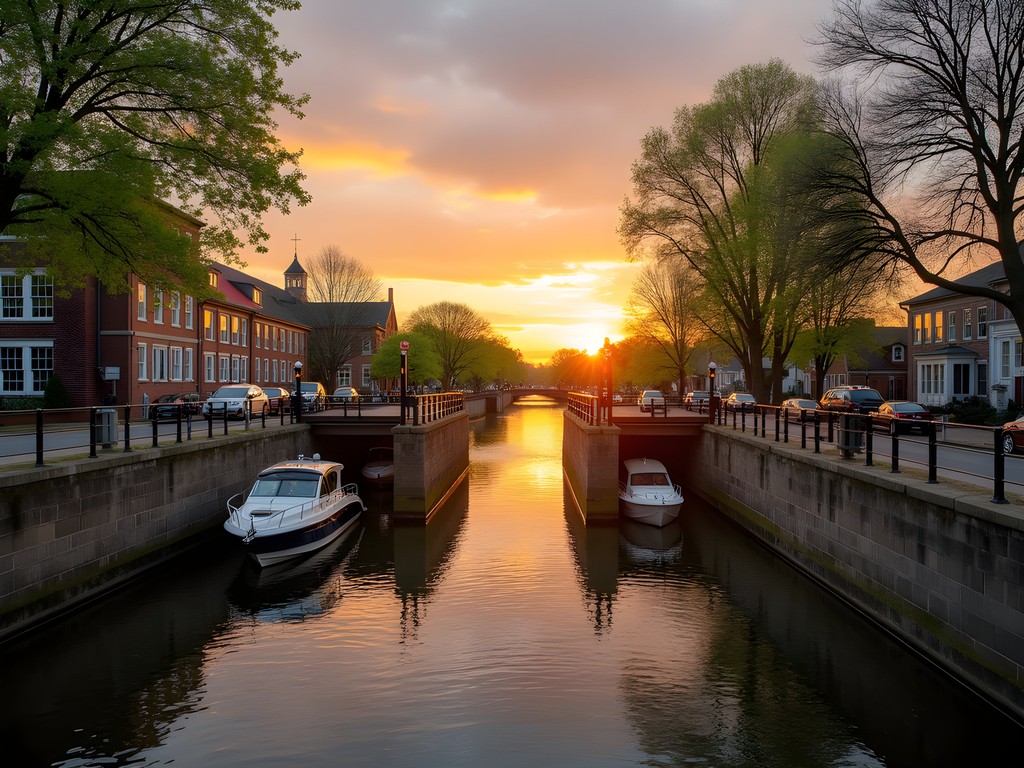
💡 Pro Tips
- Check the lock schedule at the visitor center to time your visit with boat passages
- The best photos are taken from the pedestrian bridge spanning the lock
- Visit around sunset when the golden hour light creates stunning reflections on the water
Paddle Through Time: Kayaking Historic Waterways
Having explored caves and waterways across three continents, I can confidently say that sometimes the most authentic way to connect with a landscape's history is from water level. Chesapeake offers remarkable opportunities for this through its historic waterway trails, particularly the Northwest River Water Trail.
I rented a kayak from a local outfitter and spent a magical morning paddling routes once traveled by indigenous Chesapeake tribes and later by colonial traders. The perspective from the water reveals hidden historic sites and wildlife viewing opportunities that road travelers simply miss.
The most memorable moment came when I rounded a bend to discover the remnants of an old colonial-era dock, its weathered pilings emerging from the water like skeletal fingers from the past. A great blue heron stood sentinel nearby, seemingly unconcerned with the centuries of human history that had unfolded on these shores.
For this adventure, I was particularly glad I'd packed my waterproof phone case and a dry bag for my camera gear. The ability to document these hidden historical spots without worrying about water damage was invaluable.
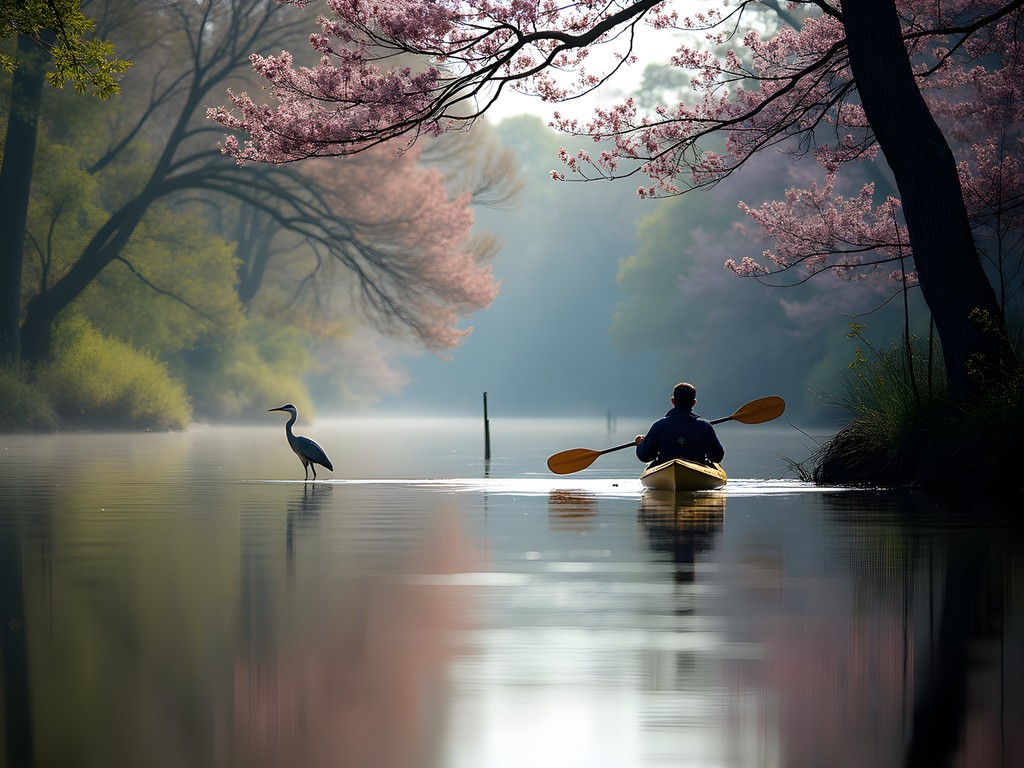
💡 Pro Tips
- Book kayak rentals at least a day in advance during spring weekends
- Ask local outfitters about historically significant routes—they often know spots not mentioned in guidebooks
- The Northwest River Park offers excellent launch facilities and historical context for self-guided paddling
Chesapeake's Colonial Waterfront: Where Commerce Met Community
The Chesapeake region's prosperity has always been tied to its waterways, and nowhere is this more evident than at the historic Battlefield Boulevard corridor. Once a vital artery for colonial commerce, today it offers a fascinating glimpse into early American maritime trade.
I spent an afternoon at the Chesapeake Visitor Center (housed in a beautifully preserved historic home) before exploring the surrounding district. The knowledgeable staff provided a self-guided walking tour map that connected the area's historic buildings with their maritime significance.
What fascinated me most was learning how the waterways dictated settlement patterns and commercial development. Unlike New Zealand's relatively recent European settlement history, Chesapeake's waterfront communities have evolved through four centuries of continuous use, creating layers of architectural and cultural heritage.
The Chesapeake Central Library houses an excellent collection of maritime maps and documents that illuminate this evolution. As someone who's spent countless hours researching cave systems, I appreciate good cartography—and these historical navigation charts are works of art in their own right.
For couples interested in maritime history, I'd recommend ending the day with dinner at one of the waterfront restaurants along the Elizabeth River. There's something undeniably romantic about watching modern vessels navigate the same channels that have sustained this community for centuries. I brought along my compact monocular to get a closer look at passing ships while enjoying local seafood—the perfect blend of history and present-day maritime culture.
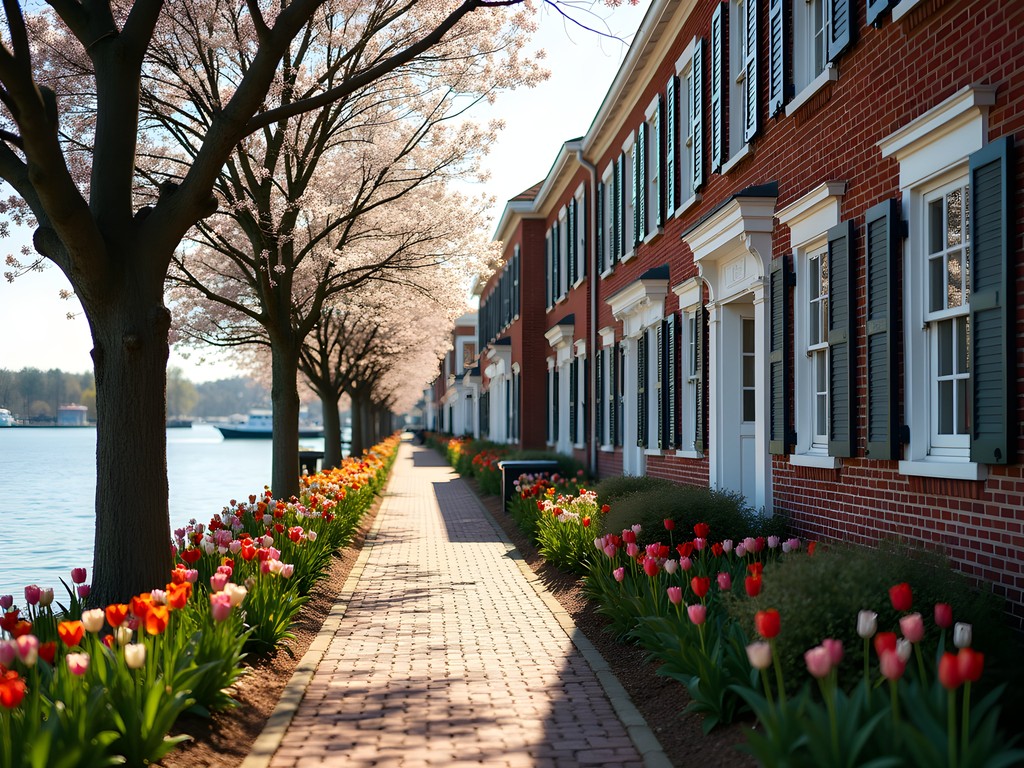
💡 Pro Tips
- The Visitor Center offers excellent free maps connecting historical sites—much better than generic online guides
- Schedule at least 90 minutes for the Chesapeake Central Library's maritime collection if you're a history buff
- Many historic buildings are private residences—bring a camera with a good zoom lens for respectful photography
Sunset Heritage: Dinner and History on the Water
After a day of exploring Chesapeake's maritime heritage, there's no better way to cap the experience than with a sunset dinner cruise aboard the Miss Hampton II. This restored vessel offers historical narration along with excellent local cuisine—combining two of my favorite travel experiences: learning and eating.
The three-hour cruise navigates waters that have witnessed everything from Revolutionary War naval engagements to Civil War ironclad battles to modern military exercises. Our guide, a retired history professor with a theatrical flair, brought these events to life as we passed significant sites illuminated by the golden glow of sunset.
As someone who's explored waterways from New Zealand's glowworm caves to Patagonia's channels, I've developed an appreciation for how water connects communities across time. Watching Chesapeake's historic shoreline from deck while enjoying Chesapeake Bay crab cakes created a perfect sensory connection to place—tasting the bounty of the same waters that have sustained communities here for centuries.
For couples, I'd recommend splurging on the travel wine glasses to bring along—the cruise offers excellent local wines, but having your own insulated glasses keeps them at the perfect temperature despite the evening breeze. It's a small touch that elevates the experience, especially when toasting the sunset over historic waters.
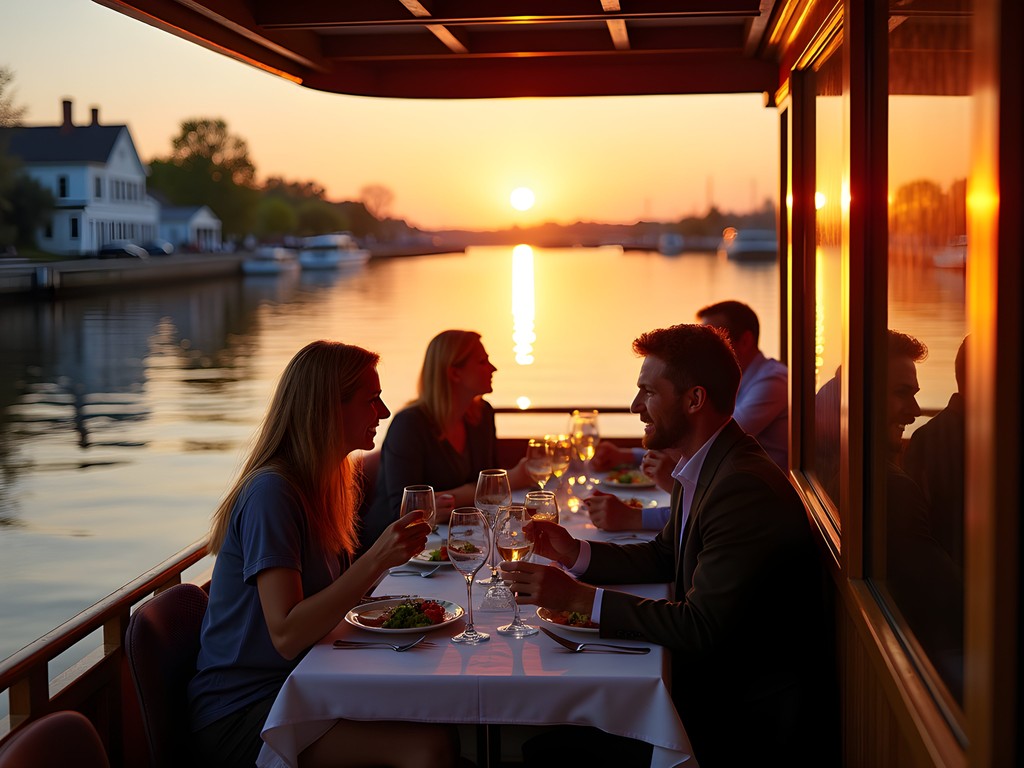
💡 Pro Tips
- Book the sunset cruise at least a week in advance—it sells out quickly during spring weekends
- Request a seat on the port (left) side of the vessel for the best historic site viewing
- Bring a light jacket or travel wrap as evening breezes can be cool even in spring
Final Thoughts
As I boarded my flight back to Wellington, I found myself reflecting on how Chesapeake's waterways connect not just places, but centuries. From indigenous canoes to colonial trading vessels to modern warships, these channels have witnessed the full sweep of American maritime history. What makes Chesapeake special isn't just the preservation of individual sites, but how the entire landscape tells a coherent story of a nation shaped by its relationship with water.
For couples with even a passing interest in history, Chesapeake offers that rare combination of educational substance and genuine romance. There's something undeniably connecting about standing together on shores where pivotal moments unfolded, or watching the sunset paint historic waters in gold—the same waters that have reflected centuries of human drama.
Whether you're paddling quiet backwaters or standing on the deck of a mighty battleship, Chesapeake's maritime heritage sites offer a tangible connection to the past that goes beyond reading plaques or browsing museums. They invite you to experience history through the same elements—water, wind, and tide—that shaped the nation's destiny. I'll be back, perhaps next time with my cave exploration gear to investigate some of the region's historic tunnels and underground waterways I've heard whispers about from local historians.
✨ Key Takeaways
- Chesapeake's maritime sites are best experienced through a combination of perspectives—from water level in kayaks to elevated viewpoints on historic vessels
- Spring offers the perfect balance of comfortable temperatures and blooming landscapes for exploring outdoor historical sites
- Connecting with local guides and docents provides invaluable context that brings maritime history to life
- The region's waterways tell a continuous story from indigenous settlements through colonial trade to modern naval power
📋 Practical Information
Best Time to Visit
Mid-April through early June for ideal temperatures and flowering landscapes
Budget Estimate
$500-700 for a weekend (accommodations, activities, meals for two)
Recommended Duration
2-3 days minimum to experience key maritime sites
Difficulty Level
Easy - Most Sites Are Accessible With Minimal Physical Demands


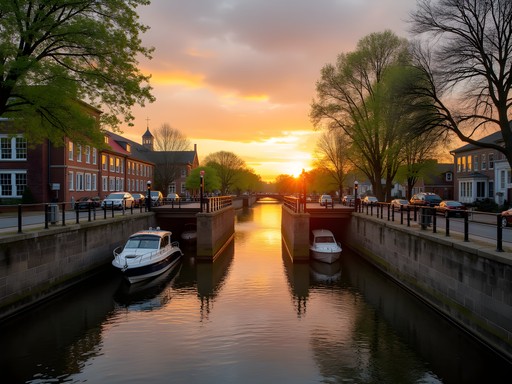
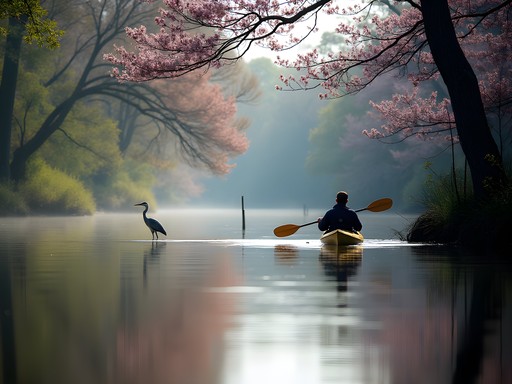












Comments
coffeetime
Love how you connected NZ maritime history with Chesapeake. Different continents, same human story!
smartgal
Just got back from Chesapeake last week and this post is spot on! We followed your suggestion about the sunset kayak tour at Great Bridge and it was magical. The way the light hit those historic buildings was perfect for photos. One thing I'd add - the Maritime Museum has a fantastic hands-on exhibit about navigation techniques that my kids loved. We also discovered a small seafood place called Captain's Table near the waterfront that serves the best crab cakes I've had anywhere. Their recipe apparently dates back to the 1800s! I used my waterproof camera bag for the kayak trip and got some amazing shots without worrying about splashes.
escapewalker
Those kayaking photos are AMAZING!! Did you bring your own kayak or rent one there? I'd love to paddle through those historic waterways!
coffeetime
Not the author but I rented from Chesapeake Paddlers when I visited. Super easy and they gave great route suggestions.
escapewalker
Thanks! Adding that to my notes. Did you need any special permits for the waterways?
coffeetime
Nope! The rental place handled everything.
Douglas Bradley
Ethan, your analysis of how Chesapeake's waterways connect historical periods is spot on. I spent two weeks there researching for my own blog last autumn, and the layering of maritime history is fascinating. The Great Bridge Lock Park was a highlight for me as well - I'd recommend visitors time their visit to see the lock in operation. The park rangers there are incredibly knowledgeable about both the mechanical aspects and the historical significance. Did you get a chance to visit the Battlefield Historic Park nearby? The contrast between the peaceful waterways today and their strategic importance during the Revolutionary War creates an interesting historical tension.
escapewalker
Douglas - what month would you recommend visiting? Trying to plan a trip and wondering about crowds vs. weather.
Douglas Bradley
Early October was perfect - comfortable temperatures, fewer tourists, and the fall colors starting to show. May is supposedly excellent too.
dreamking
This makes me want to visit Chesapeake so bad! Never thought about it as a maritime destination before.
Douglas Bradley
It's honestly one of America's most underrated maritime heritage sites. I visited last year and was blown away by how the history is so well preserved.
dreamking
Good to know! Might add it to my spring trip then.
Frank Carter
As someone who's researched maritime trade routes for my own blog, I have to say you've captured something special here, Ethan. The connection between commerce and community in these historic waterways is often overlooked. When I visited Chesapeake last spring, I was struck by how the Great Bridge Lock still functions much like it did centuries ago - a living piece of history rather than just a monument. For those interested in the deeper colonial history, I found the archives at the Chesapeake Central Library contain fascinating firsthand accounts from merchants who used these very waterways. They're digitizing many of these documents now, but there's something about holding those old logbooks that digital just can't replicate.
Ethan Cunningham
Frank, I completely missed those archives! Now I feel like I need to plan another trip. Thanks for sharing that insider tip - exactly the kind of historical immersion I love.
Frank Carter
Always happy to give another history buff a reason to return to a place! The librarian, Margaret, is incredibly knowledgeable if you go back.
trippro
Just got back from Chesapeake and followed many of your recommendations. The kayak tour through the historic waterways was incredible - our guide was so knowledgeable about both the ecology and maritime history. We even spotted some bald eagles! The Great Bridge Lock Park was fascinating to watch in operation. Thanks for the inspiration!
Haley Hamilton
Ethan, your post brought back so many memories! My grandfather was stationed at Norfolk Naval Base in the 60s, and we used to visit Chesapeake's waterways every summer when I was growing up. There's something magical about how the water there carries so much history. Last year I took my own kids kayaking through those same routes, and watching them discover the lock system was like reliving my childhood all over again. If anyone's planning a trip, I'd recommend bringing a good waterproof bag for your gear - I use my dry bag religiously on these water adventures. The historical markers along the Northwest River are easy to miss from the water, so grab a heritage map from the visitor center before heading out!
summerlegend
Love how you connected NZ's maritime history with Chesapeake's! Those sunset photos from the waterfront are stunning!
mountainbackpacker
Just got back from Chesapeake last week! Your post captures the maritime vibe perfectly. We took our kids to the Naval Museum and they were fascinated by all the ship models. Wish we'd seen your kayaking recommendations before our trip!
Venture X
Premium card with 2X miles, $300 travel credit, Priority Pass